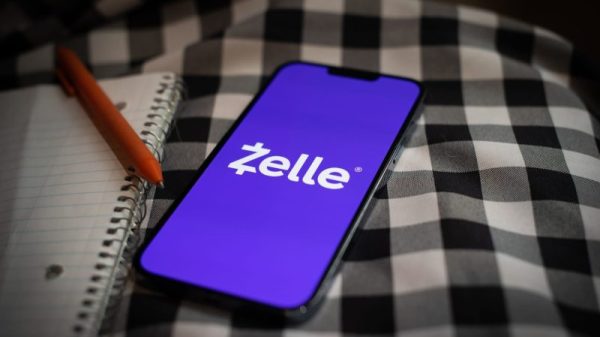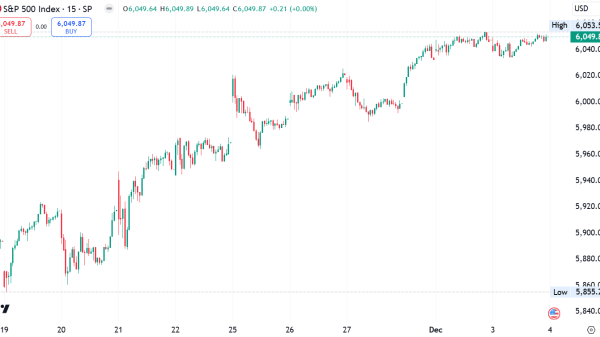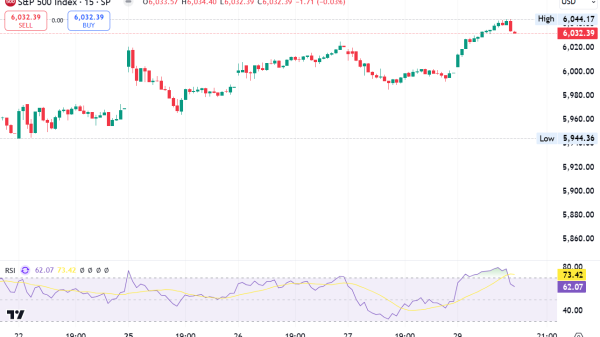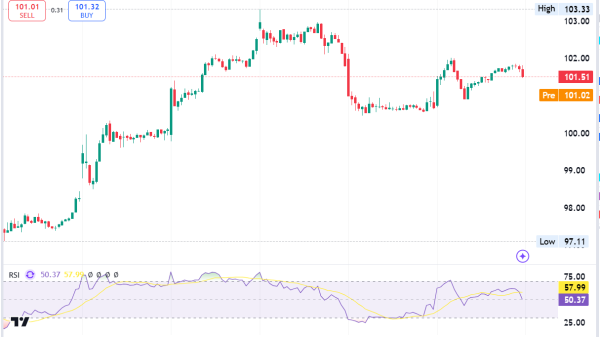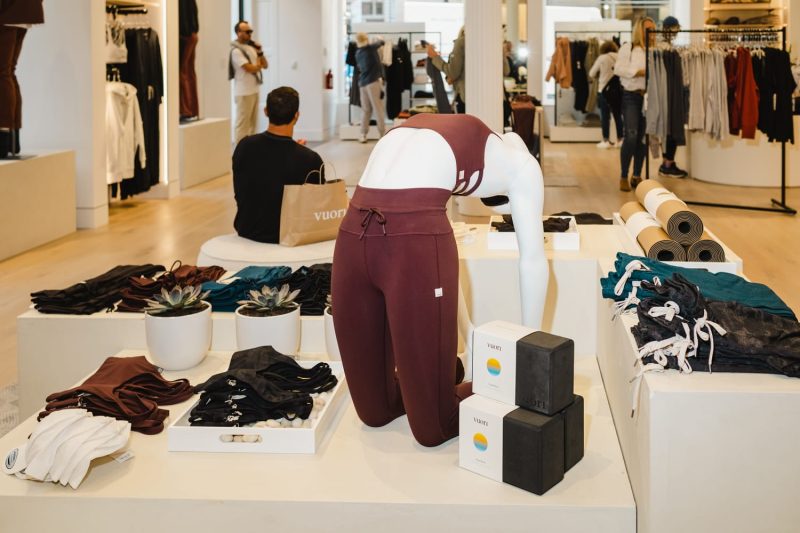When athleisure brand Vuori launched in 2015, it was headquartered in a garage, sold only men’s shorts and couldn’t get investors to give it the time of day.
Now, the Carlsbad, California, retailer is expanding globally, backed by a string of marquee investors including General Atlantic, SoftBank and Norwest Venture Partners, after raising $825 million in November in a funding round that valued the company at $5.5 billion.
It’s become the envy of incumbents such as Lululemon, Gap’s Athleta and Levi’s Beyond Yoga, and it’s poised to be one of the retail industry’s biggest IPOs when it eventually files to go public, which people close to the company say it plans to do.
“It’s a notable deal for the category it’s in … you haven’t seen many deals in that market at all over the last couple of years, and the deals that have happened have been more, I’d say, challenged, or more at value-oriented situations,” Matthew Tingler, a managing director in Baird’s global consumer and retail investment banking group, said of the recent funding round.
“Vuori’s bringing a lot of excitement and growth to the market,” added Tingler, an expert in the athletic apparel space who wasn’t involved in the transaction. “In ways, they’ve been taking share in that athleisure market broadly … they’re challenging the legacy players of Athleta and Lululemon.”
As Vuori went from a no-name brand to one of the most highly valued private apparel retailers on the planet, it saw robust sales growth and consistent profitability, winning over consumers in a crowded space with its coastal California take on athleisure.
“Vuori competes on a differentiated product, a differentiated brand, a differentiated store experience, differentiated materials,” Vuori CEO and founder Joe Kudla told CNBC in an interview. “If you were to just survey our customer base [and ask], ‘Why is Vuori so special?’ They would tell you it’s because of our product, it’s because of the comfort, the textile, the fabrics we work with, and the fit. We are all about product, product, product, and that’s ultimately what results in great performance in our industry.”
Despite its success, Vuori faces challenges ahead. The company operates in a crowded athleisure space that analysts aren’t sure will grow as quickly as it has in the past. Some see it as one of the fastest-growing apparel categories, while others expect it to slow as consumers look to dress up after years of dressing down.
Customers also seem to be worrying about whether Vuori’s products will stay the same as it scales and faces the demands of being a publicly traded company.
“If you go look at message boards right now, the thing that consumers of Vuori are most concerned about is, is the quality of the fabric going to fall?” said Liston Pitman, a strategy director with Eatbigfish and an expert in challenger brands. “Are they going to water down the brand that I love as an exchange for growth?”
Plus, Vuori faces the same issues as other consumer discretionary companies. Retailers have been forced to work harder to win customer dollars, and demand has been unsteady as consumers think twice before buying things that may be wants rather than needs.
Since it is still private, not much is known about Vuori’s financial performance. But analysts estimate that it generates around $1 billion in annual revenue, and the company says it has been profitable since 2017.
While its sales are a fraction of the $431 billion global athleisure market, Vuori has seen steady growth and has outperformed the overall sportswear market at least since 2020, according to data from Euromonitor and sales estimates from Earnest. As of the end of October, Vuori has grown sales by 23% so far this year at a time when the overall sportswear market is expected to grow by 4.3%. Last year, it grew 44% while the sportswear market expanded by only 2.4%.
Retail analyst Randy Konik, a managing director with Jefferies, said Vuori and fellow upstart Alo Yoga have been so successful in part because they’re taking share from Lululemon, which he said has alienated its primary customer base as it has expanded into new categories.
“Five years ago, Alo and Vuori were … nothing burgers, and that’s when Lululemon was growing 20% a year, whatever it is, or more. Today, you look at the numbers and you’re like, wait a second, the business is flat,” said Konik, referring to Lululemon’s largest market, the Americas. “It’s not growing, and yet it’s coinciding with the hypergrowth of Alo and Vuori. So … in my opinion, the data proves that that is a market share issue.”
Analytics firm GlobalData found that Lululemon’s customers are now spending more at Vuori than they did previously. In 2018, 1.2% of Lululemon’s customers shopped at Vuori, but that number grew to 7.8% as of the end of November.
Last week, the longtime category leader gave a cautious outlook for the all-important holiday shopping season as it contends with slowing growth and product missteps. It wasn’t asked about the competitive threats it’s facing but acknowledged that its core customer is slowing down.
Vuori’s valuation and interest from private equity come as investors flee the consumer sector. Its success has left some industry observers scratching their heads and wondering: How can a leggings and joggers company be worth this much, in this economy? Analysts say it comes down to Vuori’s business model, its ability to grow profitably and its product assortment, which has resonated with shoppers.
Kudla said the company was laser focused on growing profitably from the beginning because it really didn’t have another choice. Unlike other direct-to-consumer brands that were raising piles of cash at the time, investors weren’t interested in the mens-only brand that Kudla was pitching.
So he was forced to bootstrap the company using funding from family and friends.
“We developed a working capital model that would self-fund the business, and so we were built very counter to the trend of the time, and that resulted in a really great business with a lot of discipline,” said Kudla, who was a CPA for Ernst & Young before he got into fashion. “I managed the entire business through this complicated spreadsheet, so every decision that I made, I could forecast the cash-flow impact six months from today.”
To save money, Kudla didn’t pay himself for two years, ran the business out of a garage and hired employees who were willing to trade equity for compensation. Perhaps most importantly, he developed partnerships with his suppliers, which alleviated the cash-intensive burden of acquiring inventory and paying for it up front.
“I started treating our suppliers like they were investors in the business, and really helping them see the vision for what we were building,” said Kudla. “I was able to convince our early factory partners to give us really great terms so that I could receive the inventory, sell it, collect cash from my wholesale partners, or sell it direct to consumer and then pay for the inventory, and that strategy ultimately led me to building a working capital model that self-funded our growth.”
While Vuori started out as a purely online business, Kudla wasn’t precious about partnering with wholesalers at a time when many founders in the direct-to-consumer space were against the idea. By getting his products on the shelves at REI in the brand’s early days, he was able to build awareness and acquire customers in a way that didn’t drain Vuori’s balance sheet.
“We got profitable in 2017, we started generating free cash flow … there was no institutional capital involved in our business, no venture money involved in our business, until 2019, when we were already very profitable and on a pretty strong growth trajectory,” said Kudla.
Years later, Kudla’s approach almost feels prescient. Many of the DTC peers that Vuori came up with are now teetering on the edge of bankruptcy, unable to make the unit economics of their business work. Investors no longer have patience for companies that have no path to profitability.
Now, most brands and retailers recognize that selling only online often doesn’t work. It has proven critical to partner with wholesalers and open up stores, alongside building direct channels online.
“I like how [Vuori is] going about growth,” said Jessica Ramirez, senior research analyst at Jane Hali & Associates. “With REI, it was one of their top accounts, and I feel like it was a different way of going into wholesale, but very targeted wholesale, so knowing that that is a customer that would be purchasing a particular kind of activewear.”
Vuori’s investment from General Atlantic and Stripes in November is further evidence of a robust balance sheet. The deal was structured as a secondary tender offer, which allowed early investors to sell their shares and cash in. None of it went to the balance sheet, and Vuori didn’t need new funding for its aggressive growth plans, which include expanding into Europe and Asia and having 100 stores by 2026, said Kudla.
“We’re going to continue growing the business the same way we’ve always grown the business, which is very calculated with a lot of discipline,” he said.
In many ways, the brands jostling for share in the crowded athleisure space can blur together. They all sell leggings, they all sell sports bras, and they’re all looking to win over consumers with their unique blend of comfort, style and performance. The same can be said for the broader apparel industry, which is why having products that stand out separates the industry’s winners and losers.
Fans of Vuori say the brand’s quality, fit, fabric and comfort are what sets it apart from competitors and keeps them coming back. Meanwhile, product missteps at Lululemon have been blamed for a sales slowdown in its largest region, the Americas.
In the three months ended April 28, Lululemon’s comparable sales in the Americas were flat after the company failed to offer the right color assortment in leggings and the sizes that customers desired.
In early July, Lululemon launched its new Breezethrough leggings, designed for hot yoga classes, but ended up yanking them from the shelves after it received complaints about the product’s unflattering fit. Its lack of desirable new products is also limiting how much Lululemon’s core customer is spending with the brand, the company said when reporting fiscal third-quarter earnings Dec. 5. The company said it expects its assortment to be back in line with historical levels in 2025, which Truist anticipates will be the “key driver” for better U.S. sales, especially as it laps easier comparisons from the year-ago period.
“It seems that they’ve snoozed on where the customer is going … you have to remember that today’s consumer isn’t necessarily a loyal consumer,” said Ramirez.
“Fabric does matter, movement matters … if someone you know mentions there’s another brand that, ‘Oh, you know it held me in better, or I was able to run quicker, I didn’t sweat as much, I didn’t feel as gross,’ these very, like, small things that do matter in your performance, people will give them a try.”
— Additional reporting by Natalie Rice






